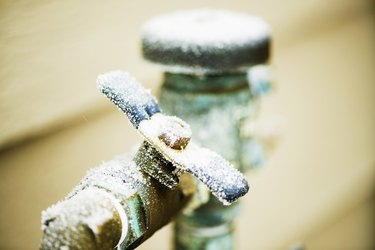Safeguarding Your Pipes from Cold Weather Issues: Key Approaches
Safeguarding Your Pipes from Cold Weather Issues: Key Approaches
Blog Article
The content following next about Winter Plumbing Precautions: Preventing Frozen Pipes is exceedingly captivating. Read it for your own benefit and decide what you think of it.

Cold weather can ruin your plumbing, specifically by freezing pipelines. Here's how to stop it from happening and what to do if it does.
Introduction
As temperature levels decrease, the danger of frozen pipelines rises, potentially causing pricey fixings and water damages. Understanding exactly how to prevent frozen pipes is crucial for house owners in cold climates.
Comprehending Icy Pipelines
What causes pipes to freeze?
Pipes freeze when subjected to temperature levels listed below 32 ° F (0 ° C) for expanded durations. As water inside the pipelines freezes, it broadens, taxing the pipeline walls and potentially triggering them to rupture.
Risks and damages
Frozen pipelines can lead to water system interruptions, building damages, and costly repair work. Burst pipelines can flooding homes and cause extensive structural damage.
Indicators of Frozen Water Lines
Recognizing icy pipes early can avoid them from rupturing.
How to recognize icy pipelines
Look for decreased water flow from taps, unusual odors or sounds from pipelines, and visible frost on exposed pipes.
Avoidance Tips
Insulating vulnerable pipes
Wrap pipelines in insulation sleeves or utilize warm tape to safeguard them from freezing temperature levels. Concentrate on pipes in unheated or exterior locations of the home.
Heating strategies
Keep indoor spaces appropriately heated up, especially areas with pipes. Open cupboard doors to allow cozy air to circulate around pipes under sinks.
Protecting Exterior Plumbing
Garden pipes and exterior taps
Detach and drain garden hose pipes before winter season. Mount frost-proof faucets or cover exterior taps with protected caps.
What to Do If Your Pipelines Freeze
Immediate activities to take
If you believe icy pipelines, maintain taps available to eliminate stress as the ice melts. Utilize a hairdryer or towels taken in hot water to thaw pipes gradually.
Long-Term Solutions
Structural changes
Consider rerouting pipes far from exterior walls or unheated locations. Include additional insulation to attic rooms, basements, and crawl spaces.
Updating insulation
Purchase top notch insulation for pipelines, attic rooms, and walls. Proper insulation aids keep regular temperature levels and decreases the risk of frozen pipelines.
Conclusion
Stopping icy pipes needs aggressive measures and quick reactions. By comprehending the causes, indicators, and preventive measures, property owners can shield their plumbing throughout cold weather.
5 Ways to Prevent Frozen Pipes
Drain Outdoor Faucets and Disconnect Hoses
First, close the shut-off valve that controls the flow of water in the pipe to your outdoor faucet. Then, head outside to disconnect and drain your hose and open the outdoor faucet to allow the water to completely drain out of the line. Turn off the faucet when done. Finally, head back to the shut-off valve and drain the remaining water inside the pipe into a bucket or container. Additionally, if you have a home irrigation system, you should consider hiring an expert to clear the system of water each year.
Insulate Pipes
One of the best and most cost-effective methods for preventing frozen water pipes is to wrap your pipes with insulation. This is especially important for areas in your home that aren’t exposed to heat, such as an attic. We suggest using foam sleeves, which can typically be found at your local hardware store.
Keep Heat Running at 65
Your pipes are located inside your walls, and the temperature there is much colder than the rest of the house. To prevent your pipes from freezing, The Insurance Information Institute suggests that you keep your home heated to at least 65 degrees, even when traveling. You may want to invest in smart devices that can keep an eye on the temperature in your home while you’re away.
Leave Water Dripping
Moving water — even a small trickle — can prevent ice from forming inside your pipes. When freezing temps are imminent, start a drip of water from all faucets that serve exposed pipes. Leaving a few faucets running will also help relieve pressure inside the pipes and help prevent a rupture if the water inside freezes.
Open Cupboard Doors
Warm your kitchen and bathroom pipes by opening cupboards and vanities. You should also leave your interior doors ajar to help warm air circulate evenly throughout your home.

I hope you enjoyed reading our section on Preventing and dealing with frozen pipes. Thanks a ton for taking the time to browse our piece. If you enjoyed reading our blog entry plz do not forget to pass it around. We truly appreciate your readership.
Set Up An Appointment Report this page